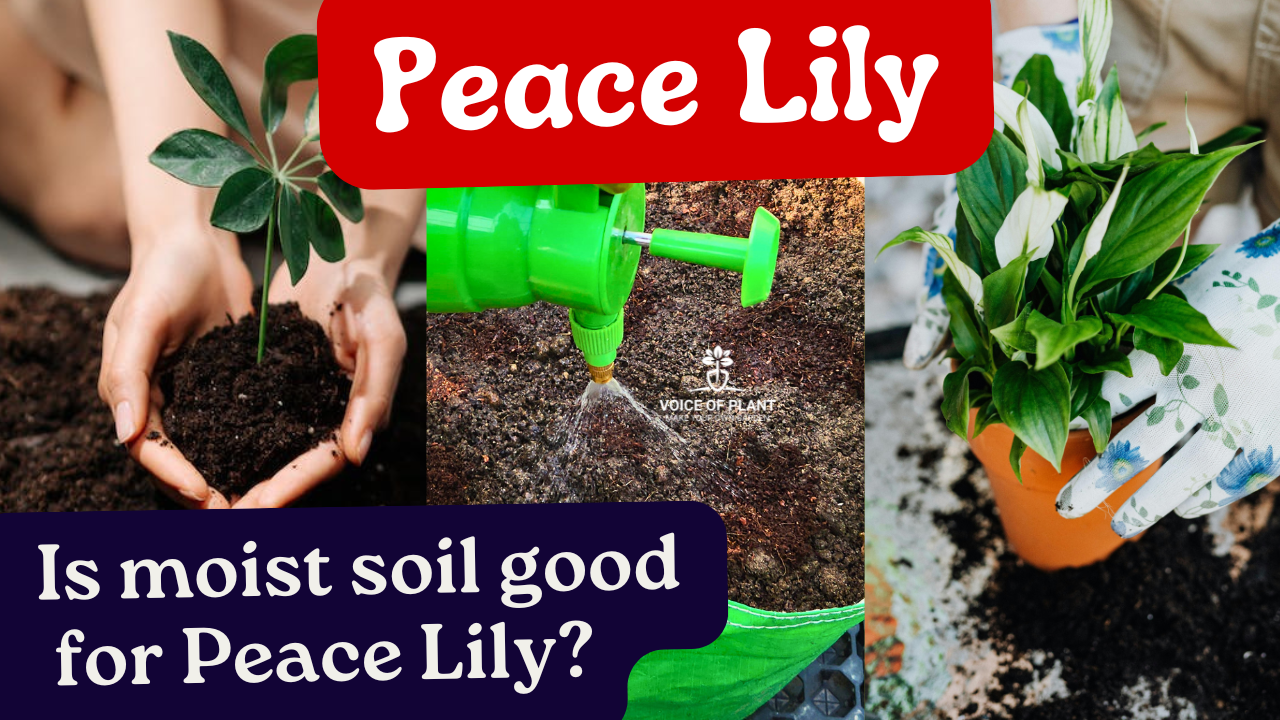Does Peace Lily Really Love Moist Soil?
Peace lilies thrive in warm, humid environments and are native to the tropical regions of Central and South America. In their natural habitat, they grow under the forest canopies, where the soil stays consistently damp but not waterlogged. These shaded environments provide indirect, bright light, which is perfect for peace lilies.
What Are Canopies?
The canopy refers to the upper layer of trees in a forest, creating a natural “roof” that filters sunlight. This indirect light is ideal for peace lilies, as direct sunlight can scorch their leaves.
In cities, peace lilies make wonderful indoor plants because we can easily create similar conditions to their natural habitat.
- Indoors, they benefit from indirect sunlight, moderate humidity, and well-draining soil, which allows them to thrive with minimal care.
Why Soil Matters
Soil is essential for peace lilies because it provides the necessary nutrients and helps maintain the right moisture levels.
Peace lilies prefer soil that retains moisture but drains well to prevent root rot.
- A balanced soil mix allows them to stay healthy and continue to brighten up any indoor space with their lush, green leaves and beautiful white blooms.
Moist Soil – What Does It Mean?
When gardeners talk about “moist soil,” they don’t mean soil that is dripping wet or muddy.
- Moist soil is slightly damp to the touch—like a wrung-out sponge.
- It retains enough water to nourish the plant but still allows for proper air circulation around the roots.
Does Peace Lily Really Love Moist Soil?
Yes, Peace Lilies prefer moist soil, but there’s a catch.
While they enjoy consistent moisture, they are not fans of soggy conditions.
- Striking the right balance is essential for their well-being.
- Too much water can suffocate the roots, while too little can leave them parched.
Benefits of Moist Soil for Peace Lily
Keeping the soil slightly moist allows the Peace Lily to thrive. Here’s why:
1. Healthy Growth:
Moist soil provides a steady supply of water to the roots, supporting lush foliage and vibrant blooms.
2. Stress-Free Environment:
Regular moisture mimics the plant’s natural habitat, reducing stress and promoting longevity.
Risks of Overwatering Peace Lily
Overwatering is a common mistake that can lead to:
1. Root Rot: A condition where roots turn mushy and lose their ability to absorb nutrients.
2. Yellowing Leaves: An early warning sign of waterlogged soil.
3. Mold and Fungus: Stagnant water creates a breeding ground for harmful pathogens.
Must read: How Much Water Does a Peace Lily Need?
Best Watering Schedule for Peace Lily
Factors like temperature, humidity, and light exposure influence how often you should water your Peace Lily.
- During warmer months, it may require watering in the gap of 4 to 5 days , while in cooler seasons, every 10–14 days might suffice.
Signs Your Peace Lily Needs Water
A drooping Peace Lily is a clear sign of dehydration.
- Other indicators include dry, crispy leaf tips and soil that feels hard or shrunken.
Soil Drainage: The Key to Moisture Balance
Drainage holes are non-negotiable for Peace Lily pots.
- To further enhance drainage, you can mix sand or small gravel into the potting soil.
Common Mistakes in Caring for Peace Lily’s Soil
Overwatering vs Underwatering
Striking the right balance is crucial. Overwatering can be as harmful as underwatering, so always check the soil before adding more water.
Inappropriate Potting Mix
Avoid heavy soils that retain too much water or drain too quickly.
How to Test Soil Moisture for Peace Lily
Insert your finger an inch or two into the soil.
- If it feels dry, it’s time to water. For a more precise reading, consider using a moisture meter.
Conclusion
Peace Lilies love moist soil, but not to the point of saturation. By maintaining the right moisture balance, you’ll help your Peace Lily flourish, rewarding you with its stunning foliage and blooms. Remember, consistency is key!
Peace Lily Complete Care Tips
==========================
Follow our Social media channel:
1. Voice of Plant – YouTube Channel
2. Voice of Plant Facebook Page
3. Instagram Voice of Plant Channel
Happy gardening!
